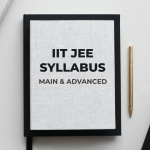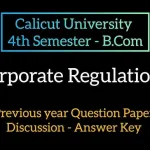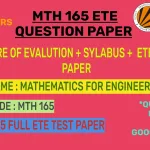Overview of Applied Mathematics 2
Applied Mathematics 2 is a subject included in the curriculum of various diploma courses such as Civil Engineering, Mechanical Engineering, Electrical Engineering, and others. The course generally covers topics including:
- Matrices and Determinants
- Definition of matrices, types of matrices (square, rectangular, identity, zero).
- Addition, subtraction, scalar multiplication of matrices.
- Matrix multiplication (if defined), properties of matrix multiplication.
- Determinants: Definition, properties, and methods for calculation (Cramer’s rule).
- Vector Algebra
- Definition of vectors, vector addition, subtraction, and scalar multiplication.
- Dot product and cross product of vectors, properties.
- Applications of vectors in geometry and physics.
- Differential Calculus
- Limits and continuity.
- Differentiation of functions: rules and techniques.
- Application of derivatives: maxima and minima, rate of change, tangents and normals.
- Integral Calculus
- Integration techniques: substitution, by parts, partial fractions.
- Definite integrals and their applications.
- Areas under curves, volumes of solids of revolution.
- Differential Equations
- Definition of differential equations.
- Methods of solving first-order differential equations (separable, exact, homogeneous, linear).
- Applications of differential equations.
- Complex Numbers
- Definition of complex numbers.
- Arithmetic operations (addition, subtraction, multiplication, division) on complex numbers.
- Polar form, exponential form, and De Moivre’s theorem.
- Statistics and Probability
- Measures of central tendency (mean, median, mode).
- Measures of dispersion (variance, standard deviation).
- Probability theory: basic concepts, addition and multiplication rules, conditional probability.
Sample Questions (without specific answers):
- Matrices and Determinants
- Calculate the determinant of a given 3×3 matrix.
- Solve a system of linear equations using matrices.
- Find the inverse of a matrix using the adjoint method.
- Vector Algebra
- Find the dot product of two vectors.
- Calculate the angle between two vectors.
- Find the cross product of two vectors.
- Differential Calculus
- Find the derivative of a given function (polynomial, trigonometric, exponential).
- Determine the intervals of increase and decrease of a function.
- Find the local maxima and minima of a function.
- Integral Calculus
- Evaluate definite integrals over a given interval.
- Use integration to find the area under a curve.
- Find the volume of a solid of revolution using integration.
- Differential Equations
- Solve a first-order differential equation given an initial condition.
- Determine the type of a differential equation and classify it.
- Solve a separable differential equation.
- Complex Numbers
- Perform arithmetic operations on complex numbers.
- Convert a complex number from rectangular to polar form.
- Use De Moivre’s theorem to find powers of complex numbers.
- Statistics and Probability
- Calculate the mean, median, and mode of a dataset.
- Determine the standard deviation of a set of data.
- Calculate probabilities involving events and conditional probabilities.
This subject aims to equip students with mathematical tools and techniques that are essential for solving engineering problems and analyzing real-world scenarios.
Importance of Previous Year Question Papers
Previous year question papers are invaluable resources for students preparing for their exams. They provide insight into the exam pattern, distribution of marks, and the types of questions that are likely to appear. By solving these papers, students can:
- Understand the weightage of different topics.
- Identify important questions that are frequently asked.
- Practice time management and improve their speed.
- Gain confidence by familiarizing themselves with the exam format.
Applied Mathematics 2 Diploma Question Papers 2017
The question papers from 2017 are particularly useful as they reflect the syllabus and exam structure of that year. Here’s a breakdown of the typical format of these question papers:
- Format of the Question Paper:
- The question paper is generally divided into sections.
- Each section corresponds to a specific topic or chapter.
- The paper may include both theoretical and numerical questions.
- Types of Questions:
- Short answer questions: These are usually straightforward and test the basic understanding of concepts.
- Descriptive questions: These require a more detailed explanation and may involve derivations or proofs.
- Numerical problems: These questions involve calculations based on the concepts covered.
- Difficulty Level:
- The difficulty level of questions ranges from basic to moderate.
- Some questions may require a deeper understanding and application of concepts.
- Marking Scheme:
- Marks are allocated to each question depending on its complexity and length.
- Weightage is given to different chapters or topics based on their importance.
How to Use Applied Mathematics 2 Diploma Question Papers 2017
To make the most of these question papers, follow these steps:
- Obtain the Question Papers:
- Request the question papers from your institution’s library or from seniors who have previously attempted these exams.
- Understand the Syllabus:
- Familiarize yourself with the topics covered in the syllabus for Applied Mathematics 2.
- Solve the Papers:
- Start with solving the question papers under exam conditions to simulate the actual exam environment.
- Analyze your performance and identify areas where you need improvement.
- Seek Guidance:
- If you face difficulties in solving certain types of questions, seek guidance from your professors or tutors.
- Review and Repeat:
- Review the solutions to understand the correct approach to solving each question.
- Repeat the process with other question papers to gain more practice and confidence.
Benefits of Using Previous Year Question Papers
Using question papers from 2017 and other years offers several benefits:
- Improves Time Management: Practicing with these papers helps you learn to manage your time effectively during exams.
- Boosts Confidence: Familiarity with the exam format and types of questions boosts your confidence.
- Identifies Weak Areas: By reviewing your performance, you can identify areas where you need to focus more on studying.
Importance of applied mathematics 2 diploma question papers 2017
Question papers from 2017 for the diploma course in Applied Mathematics 2 are crucial for students and educators alike for several reasons:
- Understanding Exam Format: Previous year question papers provide insight into the format and structure of the exam, including the types of questions asked (short answer, long answer, multiple-choice, etc.).
- Exam Pattern: They help in understanding the distribution of marks across different topics and chapters. This insight can help students prioritize their study based on the weightage given to each topic.
- Practice and Preparation: Solving previous year papers allows students to practice under exam-like conditions. It helps in improving time management skills and assessing their preparedness for the actual exam.
- Identifying Important Topics: By analyzing previous papers, students can identify the most frequently asked topics and questions. This helps them focus their preparation on areas that are more likely to be tested.
- Learning from Mistakes: Reviewing mistakes made in previous attempts or in previous year papers helps students learn from them and avoid repeating them in the actual exam.
- Revision Aid: They serve as an effective revision tool, allowing students to consolidate their learning and fill any gaps in their understanding.
FAQ related to applied mathematics 2 diploma
General FAQs
- What is Applied Mathematics 2 in a diploma program?
- Applied Mathematics 2 is a course that builds upon the fundamental concepts of mathematics and applies them to practical engineering and technical problems. It includes topics such as matrices, vectors, calculus, differential equations, complex numbers, and probability.
- What are the key topics covered in Applied Mathematics 2?
- The key topics include matrices and determinants, vector algebra, differential calculus, integral calculus, differential equations, complex numbers, and statistics/probability.
- Why is Applied Mathematics 2 important for diploma students?
- Applied Mathematics 2 provides students with the mathematical tools necessary to analyze and solve engineering and technical problems. It forms the foundation for understanding more advanced topics in engineering disciplines.
- What are the career prospects for students with knowledge of Applied Mathematics 2?
- Students who are proficient in Applied Mathematics 2 can pursue careers in various fields such as engineering, computer science, data analysis, finance, and research.
Specific FAQs
- How can I improve my understanding of matrices and determinants?
- Practice solving problems involving matrices and determinants. Focus on understanding properties, operations, and applications of matrices in engineering contexts.
- What are the applications of vector algebra in engineering?
- Vector algebra is used in engineering to represent forces, velocities, accelerations, and other physical quantities. It is essential for solving problems related to mechanics, electromagnetism, and fluid dynamics.
- How can I use differential calculus to solve engineering problems?
- Differential calculus is used to analyze the rate of change of physical quantities, find maximum and minimum values, and model systems with rates of change. It is crucial for understanding motion, optimization, and dynamic systems.
- What are the methods for solving differential equations?
- Differential equations can be solved using methods such as separation of variables, integrating factors, exact equations, and substitution. Each method is suited to different types of equations and initial conditions.
- What are the practical applications of complex numbers in engineering?
- Complex numbers are used to represent alternating currents, analyze resonance in electrical circuits, and solve problems in control systems and signal processing.
- How is probability theory applied in engineering and technical fields?
- Probability theory is used to analyze random phenomena, estimate risks, and predict outcomes in engineering designs, reliability analysis, quality control, and decision-making processes.
Study Tips
- Practice Regularly: Regular practice is key to mastering the concepts and problem-solving techniques covered in Applied Mathematics 2.
- Understand the Concepts: Focus on understanding the underlying principles and concepts rather than memorizing formulas.
- Use Resources: Utilize textbooks, online resources, and practice problems to reinforce your understanding.
- Seek Help When Needed: Don’t hesitate to ask your instructors or classmates for help with difficult concepts.
- Apply Mathematics to Real-World Problems: Try to relate mathematical concepts to real-world problems to enhance your understanding.
Latest Posts
- Step-by-step guide to download and apply for jee mains admit card 202
- Comprehensive 2025 government holidays and recruitment details for job seekers
- JEE Mains Admit Card 2025: Your Step-by-Step Guide to Downloading the Hall Ticket
- Everything You Need to Know About 2025 Government Holidays Recruitment
- Comprehensive Guide to rrb d group recruitment 2025 – Eligibility, Vacancies, and Application
- Detailed guide to nps trust recruitment 2025 vacancies, eligibility and apply process
- Comprehensive guide to hpcl recruitment 2025 notification, vacancies, and application process
- ignou bed admission 2025 complete recruitment guide with eligibility and process
- Comprehensive Guide to Indian Army Agniveer Recruitment 2025 Notification and Jobs
- Everything You Must Know About CBSE Board Exams 2025 Changes & New Rules





